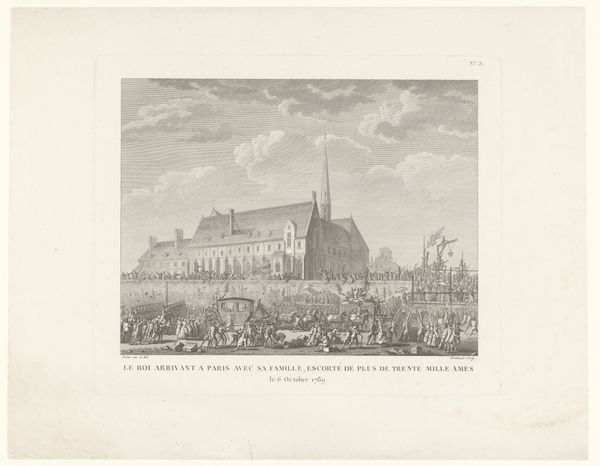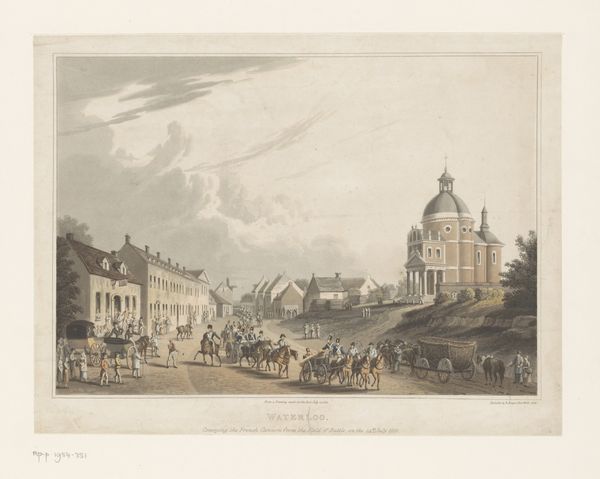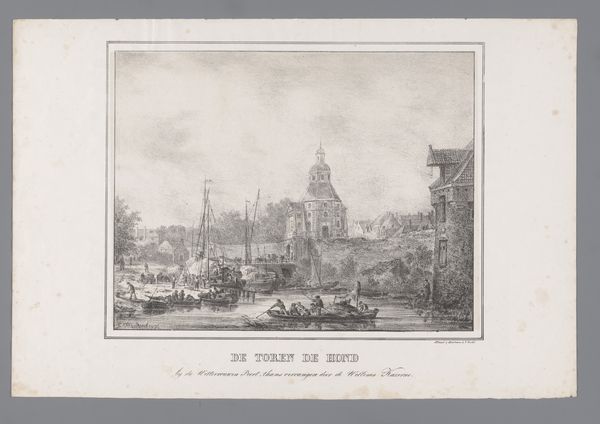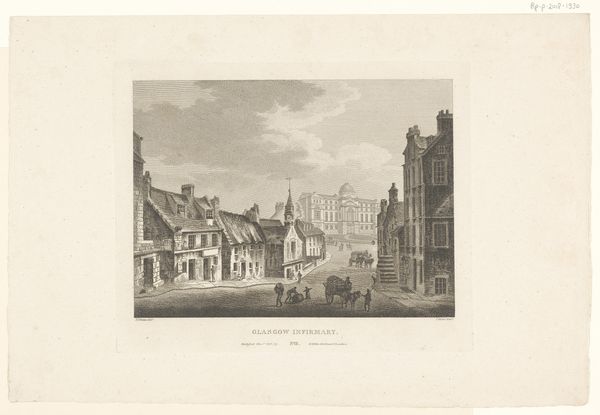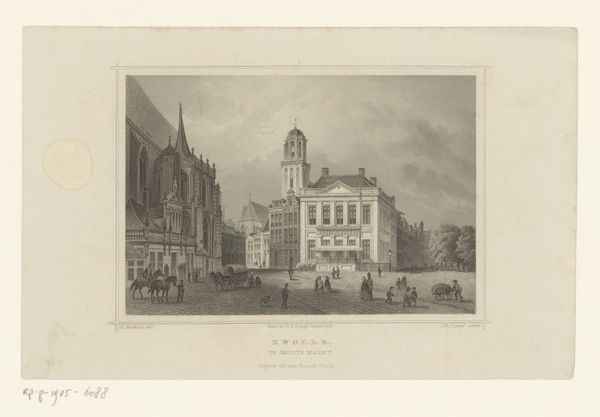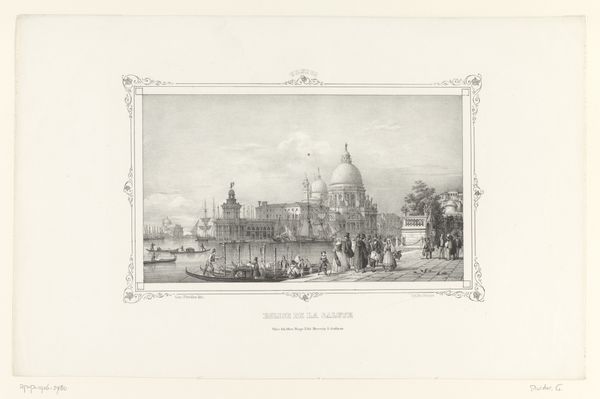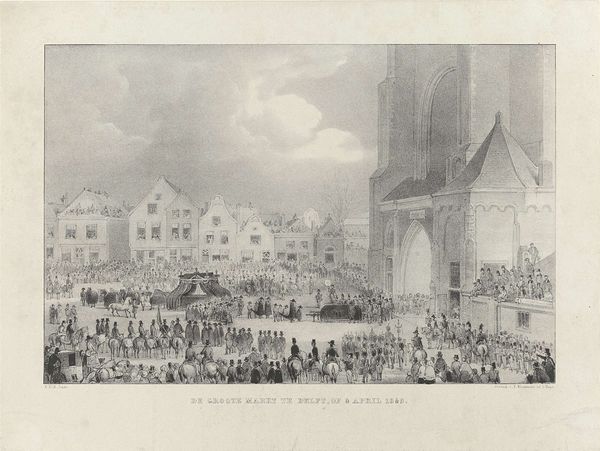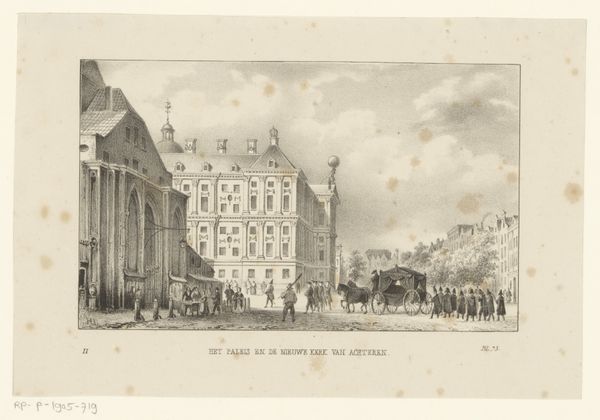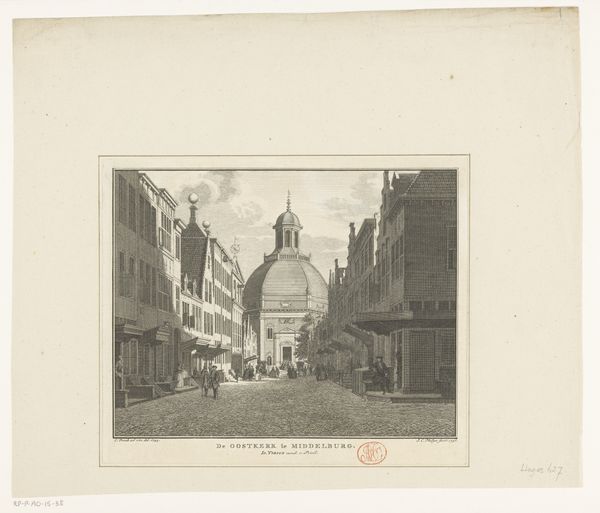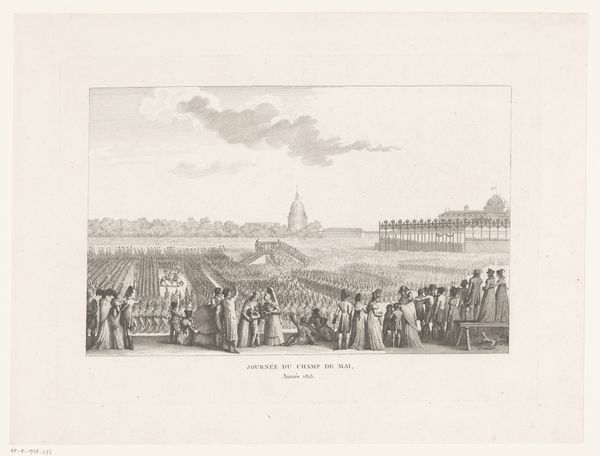
print, engraving
#
dutch-golden-age
# print
#
old engraving style
#
landscape
#
cityscape
#
engraving
#
realism
Dimensions: height 154 mm, width 215 mm
Copyright: Rijks Museum: Open Domain
Editor: This is "Gezicht op de markt te Arnhem," or "View of the Market in Arnhem," an engraving from 1863 by Joseph Maximilian Kolb. It's got a fascinatingly ordered composition; everyone and everything seems to be meticulously placed. What can you tell me about how this piece fits into the art world of its time? Curator: Well, the image showcases the market square of Arnhem, likely intended for broad circulation. Prints like this democratized access to art and information, reflecting the rise of the middle class and their interest in civic life. Consider the painstaking detail in the architecture and the rows of market carts – this is about portraying Arnhem as a respectable, industrious place. How does this relate to, perhaps, civic pride at the time? Editor: I hadn’t really considered how this artwork, as a print, would’ve been much more accessible than, say, an oil painting. So it served more of a social function perhaps? Curator: Exactly. Engravings like these became a vehicle for shaping public opinion. These images presented a specific narrative – one of order, prosperity, and faith, judging by the prominent church. Now, if we think about Dutch history, how does that orderly marketplace compare to the societal shifts happening? Editor: I see. With industrialization changing how people lived and worked, maybe these engravings were idealized images that created a comforting sense of continuity and stability. Something like propaganda, perhaps? Curator: Precisely. Examining art within its historical context opens us up to considering those political undercurrents, allowing us to consider whose stories are prioritized, and how. And vice versa - if this art was not prioritised by the mainstream, how was that so, and who did value it and why? What do you think? Editor: I'm glad you brought up the societal aspects! Seeing this artwork through the lens of history definitely deepens its significance. Curator: Agreed, and I leave more appreciative of this piece as a tool for cultural documentation, as well as artistic expression.
Comments
No comments
Be the first to comment and join the conversation on the ultimate creative platform.
